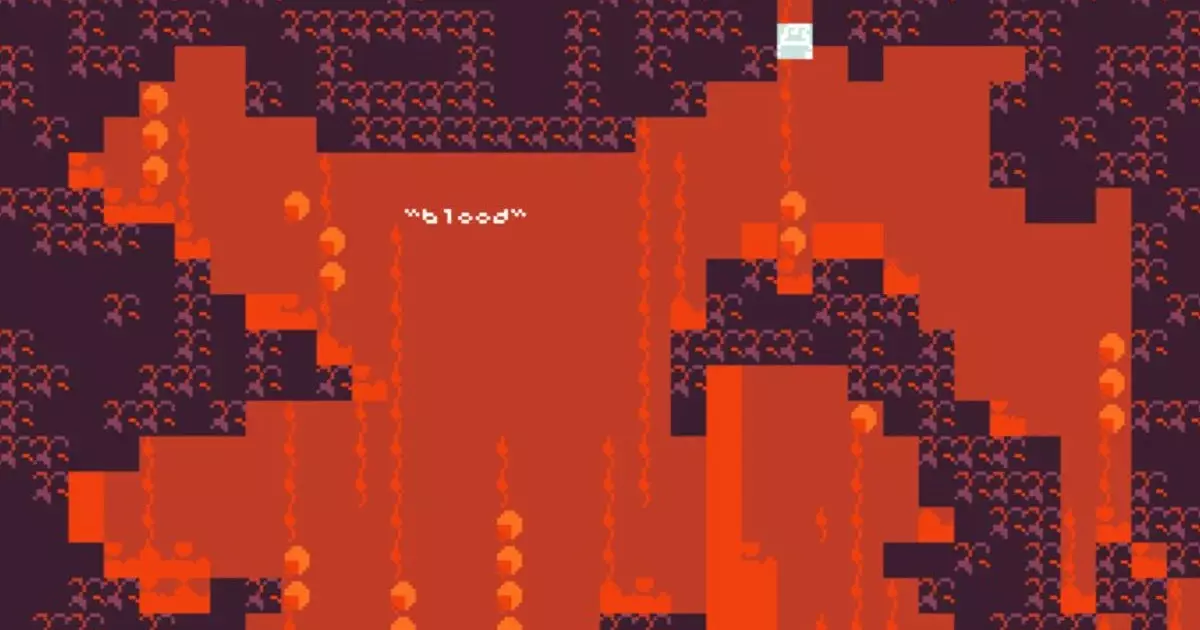In the ever-evolving landscape of independent gaming, few creators have managed to carve out a niche quite like Droqen. Best known for the surreal block-seeding puzzle game, Starseed Pilgrim, Droqen’s upcoming project, The End Of Gameplay, beckons players into an enigmatic realm where the very essence of gameplay is challenged and redefined. The title itself sets a provocative tone, suggesting an exploration beyond conventional gaming experiences—inviting players to “kill gameplay” as if it were a forgotten relic of a bygone era.
Droqen’s works have often embedded thematic elements that prioritize artistic exploration over traditional gameplay mechanics. This upcoming 2D platformer appears to take that ethos even further by stripping away familiar structures that players often take for granted. The game seeks to shatter expectations in its pursuit of a deeper connection between player and the medium. However, the ambiguity surrounding its mechanics and objectives raises questions about accessibility and relatability in a market that often favors clear, straightforward objectives.
Artistry vs. Gameplay: A Conflict of Ideologies
As Droqen himself stated, The End Of Gameplay could resonate more with indie developers than with casual gamers, elevating its aim above mere entertainment. This artistic declaration prompts us to ponder whether it is a brave venture into uncharted territory or a potentially alienating experience. The creator’s provocative assertion reflects the tension between artistry and entertainment—an ongoing debate that has been ignited by the fast-paced, high-octane gaming narratives dominating mainstream platforms.
The phrase “kill gameplay” serves as a rallying cry for those disillusioned by formulaic gaming conventions. Droqen’s desire to immerse players in a space dominated by poetic exploration rather than rigid objectives implies a desire to instigate introspection through play. Still, as someone who appreciates narrative and interactivity, I wonder if embracing such abstraction risks leaving players adrift without a guiding arc. Will The End Of Gameplay resonate with those who seek nuance and meaning, or will it demand a level of engagement that may ultimately feel unsustainable?
Anticipation Gasps: The Trajectory of Indie Creations
Starseed Pilgrim was a cryptic experience, merging existential curiosity with minimalistic design. Droqen’s new title seems poised to continue that legacy but aims for an even more specialized audience. Its description as an anthology positions it within a significant trend in the indie scene—curating diverse short-form experiences into cohesive collections. From Terry Cavanagh’s Terry’s Other Games to the multifaceted UFO 50, there seems to be a burgeoning appreciation for the intimacy and experimental nature of indie projects.
This trend highlights a collective yearning for innovation, with developers expressing their anxieties through brief explorations of varying themes. However, it’s essential to critique whether such trends might dilute individual voices by combining disparate works under a single umbrella. The reputation of indie developers hinges upon their distinctiveness and capacity to evoke genuine emotions. By presenting an amalgamation of works, we must ask whether the resulting product can still capture the potent spirit of individual creativity that defines the indie ethos.
The Allure of the Uncertain
Droqen’s revelation that he initially intended to keep The End Of Gameplay under wraps is intriguing. This desire to share something deeply personal with a select few speaks to a vulnerability that exists at the core of artistic expression. As he admitted, the momentum to publicize the project snowballed into an assertion for broader engagement, suggesting that the allure of shared experience can outweigh initial apprehensions. This transition from privacy to exposure is constant in the indie landscape, reflecting the artist’s struggle between vulnerability and the desire for acknowledgement.
The interactions on social media further amplify the anticipation surrounding this unique project. Engaging with potential audiences becomes an essential dimension of a creator’s landscape, and as they “yell” for the metaphorical execution of traditional gameplay, there may be built-up tension regarding how mainstream audiences will respond. Will they embrace the innovative ambiguity, or will they recoil from an experience that challenges their understanding of what games should offer?
Droqen’s The End Of Gameplay is an invitation to explore not just a new game, but an evolution of understanding within the medium. It dares to tread where conventional gaming fears to venture. As we reignite our perceptions of play, it serves as a reminder that engagement in art can be as profound as it is personal, as exhilarating as it is uncertain.


Leave a Reply